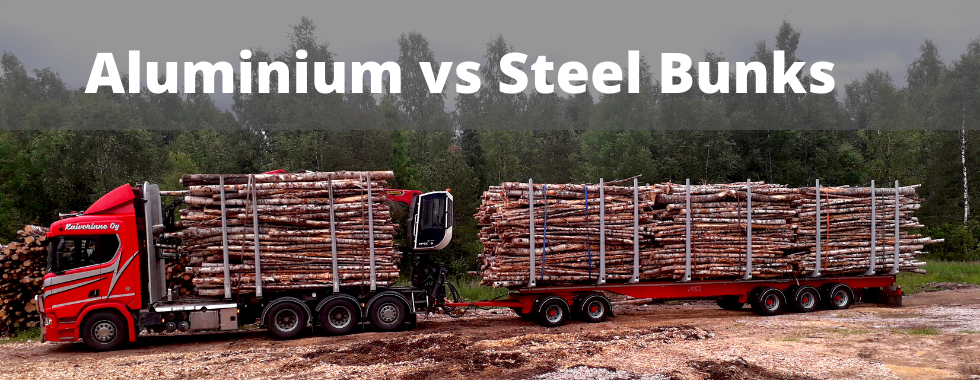Aluminium vs Steel Bunks – Which Ones Are Better?
The timber haulage industry is perpetually evolving, seeking strategies to maximize efficiency and profitability. Given that fuel represents a significant 33% of haulage costs, minimizing expenses is a priority. One strategy in focus is the reduction of vehicle weight, especially in components like logging bunks. This brings forth a significant question: When it comes to timber bunks, is aluminium or steel the better choice?
Contents
Understanding the Importance of Material Choice
While aluminium and steel are both widely utilized metals in various industries, their characteristics, benefits, and drawbacks hold particular significance in timber haulage. Each material’s weight, durability, resilience, and cost can influence operational efficiencies. Let’s break down the implications of each.
A Deep Dive into Weight and Durability
In timber haulage, every kilogram counts. The material of your bunks can dramatically influence transport capacity. Steel, characterized by its higher carbon concentration, is inherently denser and consequently heavier than its aluminium counterpart. However, this density isn’t without its merits. Steel’s weight translates to unmatched durability, making it resistant to common challenges like warping, bending, and heating.
In recent years, innovations in metallurgy have enabled the development of steel products that, while retaining their inherent strength, are far lighter and more versatile than traditional aluminium products. In practical terms, the 2.5 times greater density of steel ensures its resilience even under demanding conditions, a claim lightweight aluminium struggles to match.

Global economic trends invariably influence the prices of both aluminium and steel. Yet, a historical analysis reveals that steel typically offers more cost-efficiency. This cost advantage, combined with its superior strength and resilience, positions steel as an attractive choice for industry professionals aiming for long-term durability without breaking the bank.
A common analogy is the construction of cranes. These towering structures predominantly use steel. Were one to attempt building a crane with aluminium to match the durability of steel, the end product would be nearly three times larger. This principle is directly applicable to logging bunks, emphasizing the efficiency and practicality of steel.
Spotlight on Swedish Steel
Swedish Steel, or SSAB, has carved a niche for itself on the global stage, celebrated for its exceptional strength and endurance. Prominent infrastructures such as bridges, buildings, and even some types of vehicles are crafted using this material. In the realm of timber bunks, SSAB steel promises unparalleled capacity, optimizing load area and promoting sustainability via reduced fuel consumption and emissions.
Reaching a Conclusion
After weighing the pros and cons, steel emerges as the more favorable material for timber bunks. While aluminium’s lighter weight and inherent rust resistance are commendable, the comprehensive advantages offered by steel, particularly when fortified with protective coatings, seem to overshadow aluminium’s benefits. In the quest for safe, efficient, and profitable transport without burdening haulage weight, steel bunks, especially those like our Forest Steel XXL Timber Bunks crafted from top-tier Swedish Steel and shielded with rust-preventive coatings, appear to be the industry’s gold standard.
For a comprehensive visual representation of the benefits and features of steel bunks, watch our detailed video guide.


